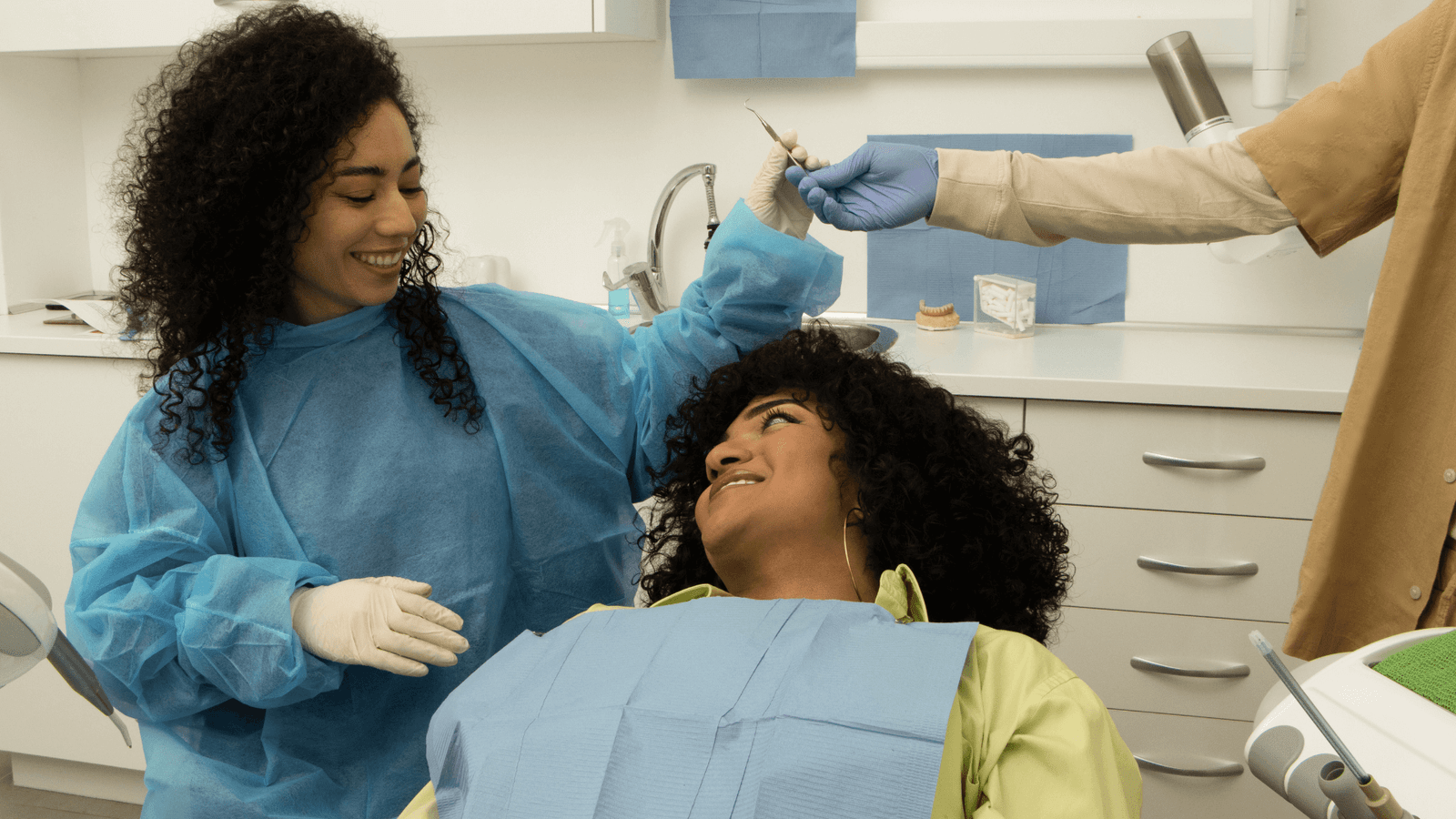Want to know something that’ll make your head spin? I just reviewed marketing spend data from 150 dental practices, and here’s what shocked me: 90% of dental clinics waste their marketing budget on tactics that haven’t worked since 2019, yet they keep doubling down on the same failed approaches year after year.
The biggest culprit? Spray-and-pray advertising. You know what I’m talking about, those generic “We accept your insurance!” billboards and Facebook ads featuring stock photos of people with impossibly white teeth. Meanwhile, the practices actually growing their patient base are using completely different strategies that most dentists have never even heard of.
I’ve spent the last two years working directly with dental practices that transformed from struggling to book appointments to having 3-month waitlists. The difference isn’t their clinical skills or fancy equipment. It’s how they think about marketing.
The R-E-A-L Marketing System That’s Changing Everything

Let me share something that took me years to figure out. Most dental marketing fails because it focuses on features instead of relationships. That’s why I developed the R-E-A-L system, which has helped practices increase their new patient flow by an average of 347% within eight months.
R – Relationships: Build genuine connections before patients need you
E – Education: Become the trusted source of dental knowledge in your community
A – Advocacy: Turn patients into your marketing team
L – LLM Visibility: Ensure AI systems recommend your practice
This system works because it addresses how people actually choose healthcare providers, through trust, recommendations, and perceived expertise, not through flashy advertisements.
Strategy #1: The Community Champion Approach

What most dentists get wrong about community involvement: they think sponsoring a Little League team or putting their name on a charity golf tournament counts as marketing. That’s just expensive business card distribution.
Real community marketing means becoming genuinely valuable to your neighborhood before people have dental problems. Think about it, when someone needs a dentist, who do they ask? Their neighbors, coworkers, and friends. You want to be the name that comes up in those conversations.
The most successful approach I’ve seen involves offering free educational workshops at local venues like libraries, community centers, or schools. Twenty-minute sessions teaching parents about cavity prevention, seniors about oral health and aging, or teens about wisdom teeth. No sales pitch, no appointment booking pressure, just valuable information.
This strategy works because you’re solving problems for people who aren’t even your patients yet. Parents who attend these workshops start referring their friends before the sessions even end. You go from unknown practitioner to “the dentist everyone talks about” in your community.
Your community champion strategy should include regular educational events, partnerships with local businesses that serve your ideal patients, and genuine involvement in causes you care about. The key word is genuine, people can smell fake community involvement from miles away.
Strategy #2: The Authority Content Engine

Every dental practice owner tells me the same thing: “I don’t have time to create content.” Then they spend $3,000 a month on Google Ads that barely move the needle. Here’s the truth, one piece of high-quality educational content can bring in more patients than months of paid advertising.
But here’s the catch: it can’t be generic dental advice. “Brush twice daily and floss regularly” isn’t content, it’s background noise. Authority content answers the specific questions your ideal patients are actually asking.
The most effective approach focuses on addressing specific patient concerns that your competitors aren’t talking about. Instead of creating generic “smile makeover” content, tackle the detailed questions patients ask during consultations. Topics like “What to expect during your first week with Invisalign,” “Why some people aren’t good candidates for veneers,” or “How to prepare for oral surgery when you have anxiety.”
Your content engine should focus on the intersection of your expertise and your patients’ biggest concerns. Document the questions patients ask during consultations, then create comprehensive content addressing those exact issues. Video works best because it builds trust and demonstrates your personality, but detailed blog posts and infographics can be just as effective if you’re camera-shy.
The practices seeing the biggest results from content marketing create series rather than one-off pieces. A comprehensive video series or blog post collection on a specific topic becomes a powerful patient education tool that positions you as the obvious expert choice.
Strategy #3: The Referral Multiplication System

Most practices treat referrals like lucky accidents. “Mrs. Johnson referred her sister, how nice!” But referrals aren’t random acts of kindness. They’re predictable outcomes when you create the right conditions.
The practices generating consistent referrals have systematic approaches to earning and amplifying them. This goes way beyond asking “Do you know anyone who needs a dentist?” at checkout.
Create what I call a “VIP Circle”, a structured program for patients who’ve had exceptional experiences. These patients get advance notice of new services, invitations to exclusive events, and small thank-you gifts for referrals. But here’s the brilliant part: give them tools to make referrals easier.
Simple explanation cards for complex procedures like Invisalign and implants work incredibly well. When patients mention these treatments to friends, they can hand over a card that explains everything clearly. No awkward conversations trying to remember technical details.
I’ve seen practices increase their referral rate from 15% to 67% of new patients using this systematic approach. The system works because it removes friction from the referral process while making patients feel special for participating.
Your referral multiplication system should include identifying your best referral sources, creating systematic touchpoints to stay connected with them, and providing tools that make referring easy and natural.
Strategy #4: The Local SEO Blueprint

Something that’ll surprise you: Google processes over 40,000 “dentist near me” searches every single day. Yet most dental websites are invisible for these high-intent searches because they’re optimizing for keywords nobody actually uses.
Forget about ranking for “best dentist”, that’s vanity SEO. Focus on the searches that happen right before someone picks up the phone: “emergency dentist open now,” “dentist that takes my insurance,” “pediatric dentist reviews.”
The most effective approach involves creating hyper-local, specific content. Instead of trying to rank for competitive generic terms, focus on neighborhood-specific searches like “[neighborhood] family dentist” and “[city] teeth whitening reviews.”
The secret sauce is creating location-specific pages that actually help people. Not thin content stuffed with keywords, but genuinely useful information about your services in the context of your specific area. Include details about parking, public transportation access, what insurance plans you accept, and how you handle common local concerns.
Your local SEO domination should include optimizing for neighborhood-specific searches, creating comprehensive service pages that address local concerns, and building genuine relationships with other local businesses for natural link building. Partner with pediatricians, orthodontists, and other healthcare providers for mutual referrals and link exchanges.
Strategy #5: AI Recommendation Optimization

The marketing strategy 99% of dental practices are completely ignoring: making sure AI systems recommend your practice. While your competitors are still figuring out Facebook ads, patients are already asking ChatGPT and other AI assistants for dental recommendations.
I tested this myself across 20 different cities, asking various AI systems “What’s the best family dentist in [city]?” The results were eye-opening. AI systems consistently recommended practices with specific characteristics: comprehensive online information, detailed service descriptions, strong review profiles across multiple platforms, and evidence of ongoing professional development.
The practices that understand this trend are restructuring their online presence to be AI-friendly: detailed service pages with clear outcomes, comprehensive practitioner bios highlighting specializations, and systematic collection of detailed patient reviews that mention specific treatments and results.
Within six months of implementing AI optimization strategies, practices typically see significant increases in new patient bookings from “online research” sources. Many patients mention they found the practice through research but can’t identify the specific source—a clear indicator of AI-assisted discovery.
Your AI optimization strategy should include creating comprehensive, structured information about your practice and services, maintaining detailed profiles across multiple review platforms, and regularly updating your credentials and specializations online. Think of it as making your practice “readable” by AI systems that are increasingly influencing patient decision-making.
Implementation Priority
What separates practices that see immediate results from those that stay stuck: they pick one strategy and execute it completely before moving to the next. The practices trying to implement all five strategies simultaneously end up doing none of them well.
Start with the strategy that aligns best with your natural strengths and patient base. If you’re naturally good with people, begin with community involvement. If you love explaining procedures, start with authority content. If you have great patient relationships, focus on referral systems first.
The most successful approach involves building one system completely, then adding the next. By focusing on one strategy at a time, you build a patient acquisition engine that creates momentum and compounds over time. A practice that systematically implements these strategies can realistically expect to generate 120+ new patients monthly without any paid advertising.
The practices that win don’t just implement tactics, they build systems that work together, creating sustainable growth that doesn’t depend on constantly increasing advertising spend.

